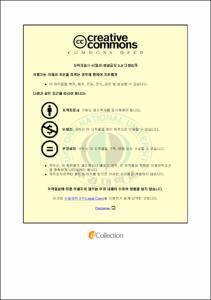Methyl silicate가 PCM 불소 도막의 내오염성에 미치는 영향에 대한 연구
- Alternative Title
- A study on the self cleaning effect by methyl silicate on PCM polyvinyliden fluoride coating
- Abstract
- Recently, the city has started to increase the construction of high buildings and buildings which are primarily focused on their appearance. It is important to keep these buildings in good condition not only to keep their value high but also to maintain the beauty of the city. Owners of recently built high buildings have spent a lot of money and time to clean their internal and external surfaces. Therefore, it has been an issue to provide a self-cleaning system to maintain the buildings in their original condition from rain, snow and air pollution. This study presents a solution to reduce maintenance costs by adding a self-cleaning system within a coated panel. This enhanced panel can protect the building from all types of environmental pollutants.
First, poly-alkyl silicate was added to highly durable PVDF paint. When this paint contacts water, the poly-alkyl silicate leads to hydrolysis on the surface of the panel. This produces surface modification of the panel and a successful hydrophilic coating on the panel. Second, the coated substrate was dipped in pH6 water to prove the hydrophilic nature of the poly-alkyl silicate on the panel surface. The time and contact angle were observed. The results of this test show the successful self-cleaning surface modification effect of poly-alkyl silicate. Last, a coated panel was exposed to the outdoors to prove its self-cleaning ability and durability. The result of the outdoors exposure shows the successful self-cleaning effect and durability of self cleaning paint with poly-alkyl silicate.
- Issued Date
- 2013
- Awarded Date
- 2013. 2
- Type
- Dissertation
- Publisher
- 부경대학교
- Affiliation
- 부경대학교 산업대학원
- Department
- 산업대학원 응용화학공학과
- Advisor
- 문명준
- Table Of Contents
- 제 1 장. 서론
1-1. 불소 도료의 사용 현황 1
1-2. 불소 수지 도료의 장‧단점 3
제 2 장. 이론적 배경 6
2-1. 불소 도료의 구성 6
2-2. 폴리 알킬 실리케이트 16
2-3. Self cleaning PVDF mechanism 17
2-3-1. 오염물의 구성과 부착 형태 17
2-3-2. 접촉각과 표면 에너지 18
제 3 장. 실험방법 20
3-1. 재료 20
3-2. 도료 제조 20
3-2-1. 불소 수지 도료 제조 공정 21
3-2-2. Self cleaning 불소 도료의 제조 공정 23
3-3. 시험편 제작 23
3-3-1. Self cleaning 불소 강판 시험편제조 23
3-3-2. Self cleaning 불소 도료 기준 도막 작성 방법 25
3-4. 도막 시험 방법 26
3-4-1. Flexibility 시험 및 평가 방법 26
3-4-2. Impact resistance 시험 및 평가 방법 28
3-4-3. Solvent resistance 시험 및 평가 방법 30
3-4-4. Pencil hardness 시험 및 평가 방법 31
3-4-5. Contact angel 시험 및 평가 방법 32
3-4-6. DJH 에 의한 도막 두께 측정 방법 34
3-4-7. 도막의 X-cut 시험에 의한 내식성 평가 방법 35
3-4-8. QUV 시험에 의한 촉진 내후성 측정 방법 35
3-4-9. W-O-M 시험에 의한 촉진 내후성 측정 방법 37
제 4 장. 결과 및 고찰 38
4-1. 기계적 물성 시험 결과 38
4-1-1. Flexibility 시험 결과 39
4-1-2. Solvent resistance 시험 결과 40
4-1-3. Pencil hardness 시험 결과 41
4-1-4. DJH에 의한 도막 측정 시험 결과 42
4-2. Long term durability 시험 결과 44
4-3. 접촉각 시험 결과 46
4-4. 내오염성 시험 결과 48
4-5. 표면 분석 시험 결과 51
4-6. 가수분해를 통한 self cleaning 시험 결과 56
4-7. Outdoor exposure 오염성 시험 결과 57
제 5 장. 결론 58
참고문헌 60
- Degree
- Master
- Files in This Item:
-
-
Download
 Methyl silicate가 PCM 불소 도막의 내오염성에 미치는 영향에 대한 연구.pdf
기타 데이터 / 3.44 MB / Adobe PDF
Methyl silicate가 PCM 불소 도막의 내오염성에 미치는 영향에 대한 연구.pdf
기타 데이터 / 3.44 MB / Adobe PDF
-
Items in Repository are protected by copyright, with all rights reserved, unless otherwise indicated.